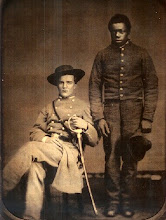 First off, kudos to the Bowery Hotel and its creators Sean MacPherson & Eric Goode for creating a truly exquisite vision of the Bowery 'gone Continental. We have always believed the Bowery to be a distinct calling card of New York City appropriate for out-of-towners or visitors from abroad. Much like New York, it is an entity onto itself having a colored history that is commonly set apart from the development of the rest of the city. It has always been boldy unashamed of what it is, for better or for worse.
First off, kudos to the Bowery Hotel and its creators Sean MacPherson & Eric Goode for creating a truly exquisite vision of the Bowery 'gone Continental. We have always believed the Bowery to be a distinct calling card of New York City appropriate for out-of-towners or visitors from abroad. Much like New York, it is an entity onto itself having a colored history that is commonly set apart from the development of the rest of the city. It has always been boldy unashamed of what it is, for better or for worse.During the 19th century the Bowery was the shadowy low-brow theatre district; birthplace of the American minstrel shows (the first form of American popular music); tap-dancing, the New York dialect, and later epicenter to the vaudeville theatre era. The Bowery was a constant thoroughfare of the carnivalesque; it may have appeared dark & dismal but it was a place that was alive with deeply American inventions and cultural fermentation.
The creators of the Bowery Hotel have taken this "aesthetic idea" of the Bowery as dark & cozy, mysterious, cave-like, ragged and well-worn, and married it to a vision of almost European grandeur. Granted, the interior of the hotel is probably far more elegant than anything that ever lived on the Bowery, but we can appreciate a tasteful appropriation of style when we see it. All the tapestries are tattered like ancient Medieval art, the furniture shows bruises and homely dings & tears in non-obstrusive places, in one hallway there is a glass showcase of Barnum-esque oddities, and surrounding the lobby is a smoky, painted panorama of a river-scape opposing the dusty streets of the old Bowery. Everywhere this dude is speckled:
 Bowery B'hoyo
Bowery B'hoyoHe is their logo & leprechaun and he is friend to Barking Irons. We know the Bowery is in transition and that's all well and good, but first, a tip of our hat to the Bowery Hotel for honoring a legacy in pursuit of new riches.
In contrast to this tasteful homage to the history that is the Bowery Hotel there is the newly constructed New Museum on Bowery, which, along with the new Whole Foods ushers in a new era of Bowery development that breaks unabashedly with the shadowy past of our humble thoroughfare and its lowly fore-bearers.
 The "New Museum" on Bowery
The "New Museum" on BoweryNow, I am not one of those who is staunchly opposed to the rising tide of development or one to lament the passing of old, decrepit buildings -this destruction/creation process is part of the life blood of New York, if it did not exist it would truly be something to lament- but these fancy pants architects need to call a spade a spade. This is an excerpt from a recent interview:
Question: How does your design address the context of the Bowery—the thoroughfare itself, the beginning of Prince Street at the site, the surrounding of smallish buildings of different styles and conditions?
Answer: We wanted to be as consistent as possible with the scale of the existing surroundings. However, our building has to accommodate a much bigger program than its neighbors do. By shifting the different levels of the structure in relation to one another, we are also diminishing the bulk and establishing a more effective, dynamic relationship with the buildings in the area. On the other hand, because this area is in transition, we believe the New Museum building should have a strong identity of its own in order to survive, especially on a street as tough as the Bowery.
If this isn't blowing theoretical smoke up our asses, I don't know what is. Your building is by no stretch of the imagination at harmony or in context with its surroundings, it sticks out like a sore thumb and that's exactly what you wanted it to do. And what does "diminishing the bulk" even supposed to mean?? Does it mean diminishing the crappiness?? If so, well done. But we're not so bitter, we know that its par for the course and thats how come your pants got so fancy, so welcome to the Bowery... I guess.






